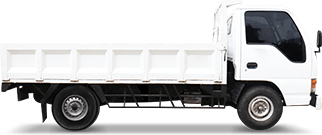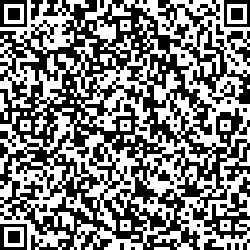
Outbound logistics process refers to all the activities involved in moving finished products from a company’s manufacturing facility or warehouse to the final customers. It also provides an opportunity to streamline your usual supply chain operations. Businesses with outbound logistics need to learn the different aspects to achieve success. Read more in the discussion below.
Understanding Outbound Logistics Process
Outbound logistics process talks about those processes involved in the movement and storage of products from the end of the production line to the end user. It encompasses activities such as order fulfillment, warehousing, transportation, and distribution. In essence, outbound logistics focuses on streamlining the existing supply chain operations of businesses.
SEE ALSO:
- Three Types of Logistics Explained: Inbound, Outbound, Reverse
- Inbound Logistics in Value Chain and the Inbound Operations
- Reverse Logistics Importance: Why You Shouldn’t Neglect It?
Streamlining Supply Chain Operations
Approaching supply chain operations should be done through different facets of the supply chain. Most commonly known processes involve inventory management, technology, transportation, communication, and strict implementation.
Inventory Management of Outbound Logistics
Some of the best practices, such as ABC analysis, cycle counting, and demand forecasting, can help businesses optimize their inventory management in outbound logistics. By maintaining accurate inventory records and adopting efficient storage methods, businesses can minimize stockouts and overstock situations. Inventory management strategies such as utilizing technology for effective inventory management that includes advanced technologies such as warehouse management systems (WMS) and inventory tracking software can streamline inventory management processes. These technologies provide real-time visibility into stock levels, improve order accuracy, and enhance overall warehouse efficiency.
Integrating Technology in Outbound Logistics
The use of technology from automated warehousing solutions to sophisticated TMS, technology modernizes outbound logistics and enables businesses to enhance visibility, improve accuracy, and increase efficiency across their supply chain. Some of these technologies are:
- Automation and Robotics
Automation technologies and robotics can transform warehousing management solutions, from automated picking systems to drones. These innovations not only speed up the process but also reduce the likelihood of errors. - Real-Time Data Analytics
Leveraging real-time data analytics can provide critical insights into the logistics process, allowing companies to make informed decisions quickly. This capability is essential for adapting to changes in demand or operational challenges. - IoT and Tracking Technologies
The Internet of Things (IoT) and advanced tracking technologies ensure that companies have real-time visibility into the status and location of their shipments. This transparency is crucial for maintaining the integrity of the supply chain and for proactive customer service.
There are delivery apps now that have this real-time tracking feature like Transportify, where the only thing you need is an internet connection and a phone or a laptop to check the status of your deliveries with just a click. This on deman delivery platform does not only integrates the latest technology but also provides businesses a variety of vehicle selection options. The table below shows the updated list of service vehicle offerings of Transportify.
| Vehicle Type | Dimensions/ Weight Limits | Base Price (Metro Manila) | Base Price (Outside Metro Manila) | Base Price (Visayas/Mindanao) |
|---|---|---|---|---|
 Wing Van Wing Van | 32 to 40 x 7.8 x 7.8 ft 12000kg to 28000kg | 7000 PHP | 6500 PHP | 6500 PHP |
| 18 x 6 x 7 ft 7000kg | 4850 PHP | 4850 PHP | 4850 PHP | |
 Closed Van Closed Van | 10 to 14 x 6 x 6 ft 2000kg to 5000kg | 1600 PHP | 1450 PHP | 1450 PHP |
 Open Truck Open Truck | 10 to 21 x 6 ft x open 2000kg and 7000kg | 2300 PHP | 1950 PHP | 1950 PHP |
 L300/Van L300/Van | 8 x 4.5 x 4.5 ft 1000kg | 415 PHP | 374 PHP | 335 PHP |
 Small Pickup Small Pickup | 5 x 5 ft x open 1000kg | 418 PHP | 338 PHP | 325 PHP |
| 5.5 x 3.8 x 3.8 ft 600kg | 375 PHP | 292 PHP | 275 PHP | |
| 5 x 3.2 x 2.8 ft 200kg | 240 PHP | 210 PHP | 160 PHP | |
| 3.5 x 2 x 2.5 ft 200kg | 220 PHP | 190 PHP | 140 PHP |
Transportify Optimizing Transportation in Outbound Logistics
Transportify’s on demand delivery platform provides solutions to help businesses optimize their transportation processes and delivery performance. Transportation process is a significant component of outbound logistics that directly affects a company’s service levels and operational costs. Optimizing transportation means selecting the most efficient routes and modes of transport to minimize delays and reduce expenses.
- Route Optimization
Using advanced routing algorithms can significantly reduce travel time and fuel consumption. These technologies consider traffic patterns, weather conditions, and vehicle capacity to determine the most efficient routes. - Carrier Selection
You know you are with the right carrier is when challenges before them has definitely been resolved with the presence of your logistics service provider. A logistics company in the field that gives reliable and essential solutions should be your business’ top priority in carrier selection. Partnering with reputable carriers like Transportify that offer the best rates and service levels is really a great catch.
- Consolidation of Shipments
As Transportify prioritizes tailored solutions for businesses with different shipping needs, aside from offering business program benefits, consolidating shipments through cargo forwarding service can lead to substantial cost savings by maximizing vehicle capacity and minimizing the number of trips needed. This approach is particularly effective in reducing the carbon footprint of transportation activities, aligning with sustainable business practices.
Enhancing Communication in Outbound Logistics
All is smooth with good and effective communication. This also applies to streamlining your supply chain operations. It involves coordinating with various stakeholders, including suppliers, carriers, and customers, to ensure transparency and efficiency.
Maintaining open lines of communication with customers about their order status and delivery schedules is crucial for customer satisfaction. Automated notification systems, like SMS and email alerts, keep customers informed and engaged throughout the delivery process.
Strategic Implementation for Advanced Outbound Logistics
To effectively streamline supply chain operations with outbound logistics, companies must adopt a strategic approach that incorporates the best practices in logistics. This involves regular training for logistics staff, investment in advanced systems, and a commitment to continuous improvement.
Implementations, similar to other types of logistics, come with a commitment to continuous improvement. Adopting a culture of continuous improvement meets market conditions and customer expectations. This approach encourages innovation and agility within the organization, ensuring that the outbound logistics process remains competitive and effective.
Download Transportify app by scanning the QR code or clicking the buttons below:
 | or |




 INSTANT QUOTE
INSTANT QUOTE

 Chat
Chat